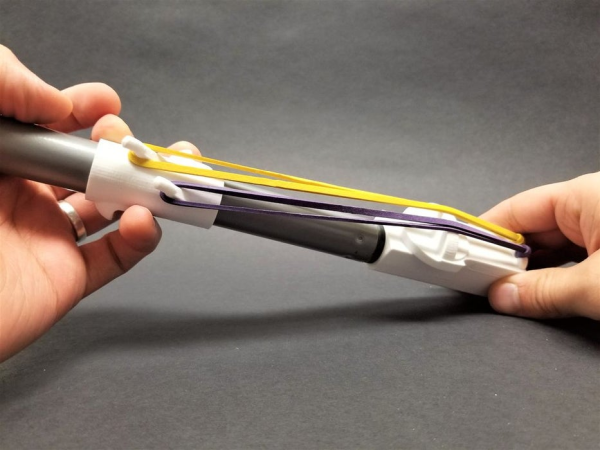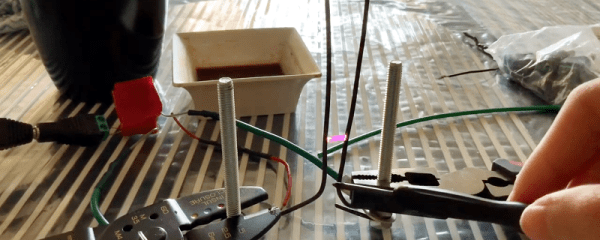Over the last several months, [Eric Strebel] has been working on a concept for an electric-powered infantry combat vehicle. We don’t think he’s been contracted by any nation’s military to design this vehicle, but as a product designer we imagine he does this sort of thing to keep himself sharp. In any event, it’s been fun to watch from the sidelines.
In the latest installment in this series of videos, [Eric] turns his earlier concept art into a functional prototype; albeit at somewhat reduced scale. Still, building any kind of vehicle from the ground up is no easy feat and it’s fascinating to watch the process.
 The futuristic faceted look of the vehicle’s armor plate makes for an exceptionally time-consuming build, as he has to cut and glue each piece of foam core into place. Some of the smaller pieces seem to have the tell-tale char marks from a trip through the laser cutter, but in the video after the break you can see that the larger panels are hand cut with a razor.
The futuristic faceted look of the vehicle’s armor plate makes for an exceptionally time-consuming build, as he has to cut and glue each piece of foam core into place. Some of the smaller pieces seem to have the tell-tale char marks from a trip through the laser cutter, but in the video after the break you can see that the larger panels are hand cut with a razor.
The plan was originally to just make a static mock-up of the vehicle, but thanks to a pair of remote controlled trucks that [Eric] found at this local Big Box retailer, this foam fighter ended up getting an upgrade. After liberating the motors and gearboxes from the two trucks, he 3D printed axle extensions to take into account the wider track of his vehicle, and built his “tub” around it. While the R/C gear is clearly on the low end of the spectrum, the overall effect looks great as the vehicle is bounding around the yard.
Readers of Hackaday will no doubt be well aware of [Eric Strebel] and his many talents. From 3D scanning via photogrammetry to embedding electronics into flexible molded parts, you’re sure to learn something new from following this prolific maker.
Continue reading “An Armored Vehicle From Foam Core And Big Box Toys”




















